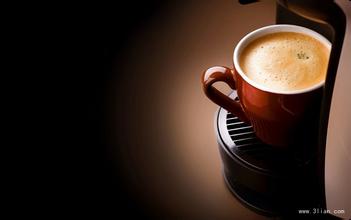Introduction of Panamanian Kasha Coffee with various flavors and characteristics of Fine Coffee in Manor
In September 1977, Pakistan and the United States signed the Panama Canal Treaty (also known as the Torrijos-Carter Treaty). [5]
In May 1989, in the Panamanian general election, both the ruling party and the opposition party claimed victory, so the election result was invalid. With the good offices of the Organization of American States, Rodriguez became interim president on August 31. Noriega, who opposes the US occupation, was appointed head of government on December 15. On the 20th, US troops invaded Panama. On the 21st, Ndalla, the former opposition presidential candidate sheltered by the United States, was sworn in as president at the US military base. [5]
In January 1990, Noriega surrendered to the US military and was taken to the United States to stand trial.
On October 4, 1994, the Pakistani parliament adopted a draft amendment to the Constitution, which provides for the abolition of the army and the establishment of a police force.
On December 31, 1999, Panama regained the sovereignty of the canal. [5]
On October 28, 2015, he was elected a member of the United Nations Human Rights Council for a term of office from 2016 to 2018. Panama is located on the Panamanian isthmus in Central America, bordering Colombia in the east and the Pacific Ocean in the south.
It is bordered by Costa Rica to the west and the Caribbean to the north. The territory is S-shaped to connect North and South America, and the Panama Canal connects the Atlantic and Pacific oceans from north to south. It is known as the "bridge of the world". [5] Panama has a land area of 75517 square kilometers, a land length of 772km and a width of between 60km and 177km. The coastline is 2988 kilometers long and the land boundary is 555 kilometers long. In terms of longitude and latitude, Panama is located between 7 °and 10 °north latitude and 77 °to 83 °west longitude.
Topography and geomorphology
The whole territory of Panama is undulating, with vertical and horizontal valleys, mostly mountains except the north and south coastal plains. [6]
Hydrology
There are more than 400 Panamanian rivers, the larger of which are Tuila, Chebo and Chagrys. [6]
Climate
Panama is near the equator and has a tropical maritime climate. It is humid during the day and cool at night. The annual average temperature is 23-27C °. The whole year is divided into two seasons: drought and rain, with an average annual precipitation of 1500m3 2500mm.
Panama is a small country located in the center of the American continent. The waters of the Atlantic and Pacific oceans flood its beaches.
Panama is located at 9 degrees north latitude, the meeting point of the Central Mountains, where Mount Baru, one of the highest volcanoes in Central America, is located.
The Baru volcano has an altitude of more than 11400 feet, and the land around it is rich in nutritious and fertile soil, providing sufficient conditions for the sowing and cultivation of coffee endemic to Panama.
The appropriate microclimate, soil, temperature and height of these highlands are suitable for sowing, planting and harvesting a variety of unique coffees. These coffees have jasmine, citrus, ripe fruit, berries, caramel, special sweetness, vanilla, chocolate and other flavors.
Unique coffee
Panamanian coffee is classified and numbered into small batches, which are designed to have a small capacity for optimal management, and classification numbers allow buyers to understand and track the entire process.
Because of its small quantity, Panamanian coffee products are based on special coffee. The country provides its high-quality products to specialized stores around the world, such as Denmark, Britain, Greece, Norway, Sweden, South Korea, Japan, Taiwan Province of China and Geisha of the United States, which were found in the rose forests of Ethiopia in 1931 and then sent to the Coffee Research Institute in Kenya. It was introduced to Uganda and Tanzania in 1936, to Costa Rica in 1953, and to Panama in the 1970s by Mr. Francis Coselazin of Dongba Seven Farm Garden, who received seeds from CATIE in Costa Rica and began to grow Rose Summer Coffee.
Geisha, sweeping the coffee world with the power of a hurricane, the coffee revolution is so fierce that the blue mountains of Jamaica and Kona of Hawaii, which have long occupied the throne of the coffee kingdom, have to stay away. This wild species, which originated in Ethiopia, is now widely used in major coffee producing areas after numerous battles, and its best spokesman is the "LaEsmeralda" estate from Panama.
History of Esmeralda Farm: founded by Hans Elliot, a Swede, in 1924, Esmeralda Farm was not a coffee grower but a ranch. Forty years later, in 1964, Mr. Danielupidason's grandfather, Ruth Lover. Mr. Bidasson bought Esmeralda Farm in order to have an old home after retirement. His grandfather, Mr. Ruth Lover Bidasson, was born in Sweden and was president of the Bank of America and director of United Nations development. His son, Mr. Brais Bidarsson, moved to Panama from California in 1973 and inherited to run his father's farm. In 1987, most of the farms were changed to grow coffee. In 1994, he invested in the machinery and equipment of refined coffee in order to create a brand. Mr. Brais Bidarson and his wife Susan also raised three children, Elligu (born in Philadelphia in 1966). Rachel (born in Sweden in 1967), Danielu (born in Panama in 1974)

Important Notice :
前街咖啡 FrontStreet Coffee has moved to new addredd:
FrontStreet Coffee Address: 315,Donghua East Road,GuangZhou
Tel:020 38364473
- Prev

Dominica Santo Domingo Coffee Flavor and Taste introduction to boutique coffee in manor area
Thousands of Tylenos were demoted to slavery and engaged in gold mining. Due to a series of oppression, hunger and disease, by 1535, the Tino had only 60,000 left. In 1501, King Ferdinand I and Isabella of Spain were the first to allow Caribbean colonists to introduce slaves from Africa. They began to arrive on the island in 1503. [3] in the early days of the Spanish island, the Spaniards were in the new.
- Next

Fragrant Jamaican Coffee Flavor and Taste introduction to Fine Coffee in Manor area
Columbus came to Jamaica in 1494, and in 1509 Spain declared Jamaica its colony and renamed it Santiago. Spain's slave policy towards the indigenous peoples led to the extinction of the Arawaks on the island as a result of war, disease and enslavement. In order to replenish the labor force, Spain began to sell slaves from Africa to Jamaica since 1517, causing blacks to gradually become teeth.
Related
- Detailed explanation of Jadeite planting Land in Panamanian Jadeite Manor introduction to the grading system of Jadeite competitive bidding, Red bid, Green bid and Rose Summer
- Story of Coffee planting in Brenka region of Costa Rica Stonehenge Manor anaerobic heavy honey treatment of flavor mouth
- What's on the barrel of Blue Mountain Coffee beans?
- Can American coffee also pull flowers? How to use hot American style to pull out a good-looking pattern?
- Can you make a cold extract with coffee beans? What is the right proportion for cold-extracted coffee formula?
- Indonesian PWN Gold Mandrine Coffee Origin Features Flavor How to Chong? Mandolin coffee is American.
- A brief introduction to the flavor characteristics of Brazilian yellow bourbon coffee beans
- What is the effect of different water quality on the flavor of cold-extracted coffee? What kind of water is best for brewing coffee?
- Why do you think of Rose Summer whenever you mention Panamanian coffee?
- Introduction to the characteristics of authentic blue mountain coffee bean producing areas? What is the CIB Coffee Authority in Jamaica?

